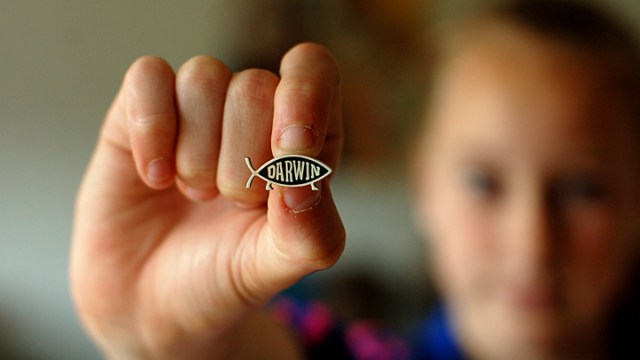NASA’s New Horizons unveils its masterpiece: Pluto’s interior
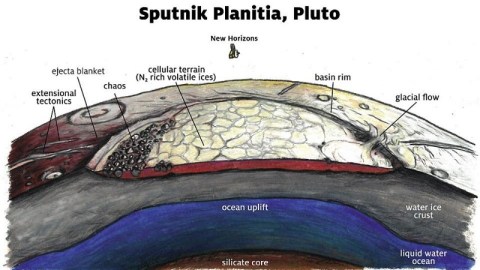
And what it found was a world swimming, literally, with possibilities.
Just as a Chihuahua is still a dog, these ice dwarfs are still planetary bodies. The misfit becomes the average. The Pluto-like objects are more typical in our solar system than the nearby planets we first knew.” –Alan Stern
In July of 2015, after a nine year journey through space, New Horizons flew past Pluto at a speed of more than 30,000 mph (13 km/s). Over the span of just a few hours, it took so much data with so many cameras and instruments it took a full 16 months to send it all back to Earth, a task that was just completed weeks ago. The data it sent back allowed us to construct a full map of one of Pluto’s hemispheres, plus a glorious backlit shot of its night side in eclipse. But scientifically, there was so much more than a slew of beautiful pictures, and that data enabled us to understand, for the first time, the interior of a Kuiper belt world.
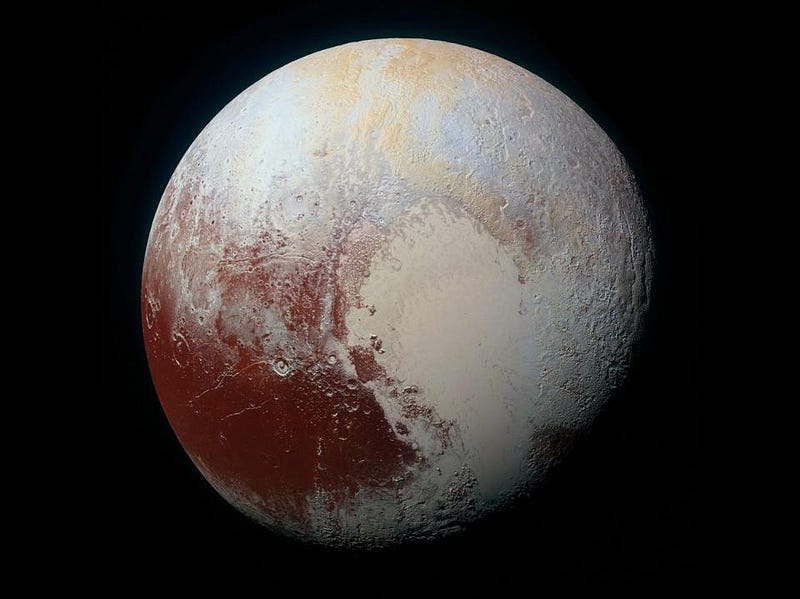
Here on Earth, we have mountains, plateaus, plains and oceans covering the surface. But these surface variations correspond to different physical properties the farther down into the Earth’s interior you go. The Earth’s crust floats atop the mantle, which in turn floats above the outer and inner cores. Similarly, the ocean floats above the crust, and the atmosphere above them both. In general, the less dense layers of any world are found atop the denser layers, and that gives rise to what we see here on the surface. But just as water has to displace to stably support a ship submerged in it, a lower layer needs to displace so that mountains don’t tip over or so that upswells don’t destroy valleys or crustal troughs. In order for these surface variations to exist and be stable, we need the lower layers to compensate as well.
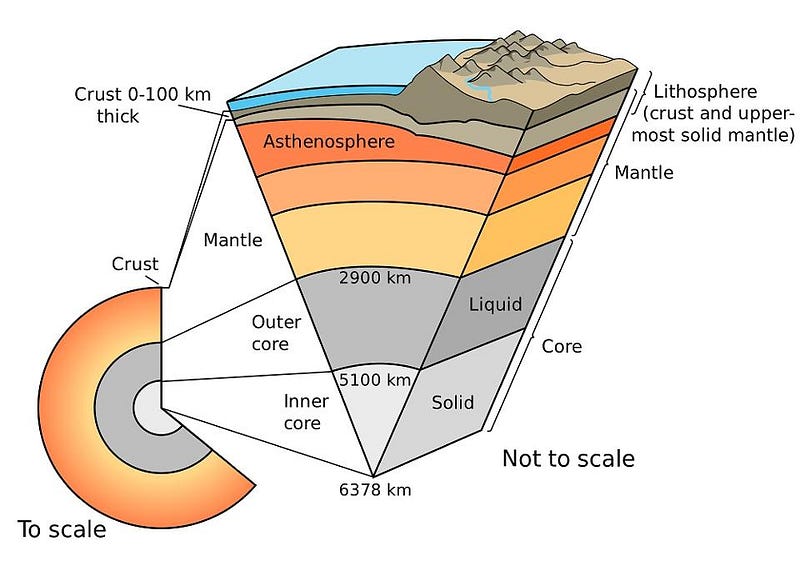
On Earth, that means that the highest mountain ranges also see the crust dip into the mantle beneath those ranges a significant amount, something we can detect my intricately measuring the Earth’s magnetic field. The ocean bottoms are where the crust is thinnest: only 2–5 km thick in some places. And similarly, plateaus, plains and continental shelves have identifiable features beneath the surface as well. Our active geology isn’t just about what happens on the surface, but deep in the planet’s interior as well.
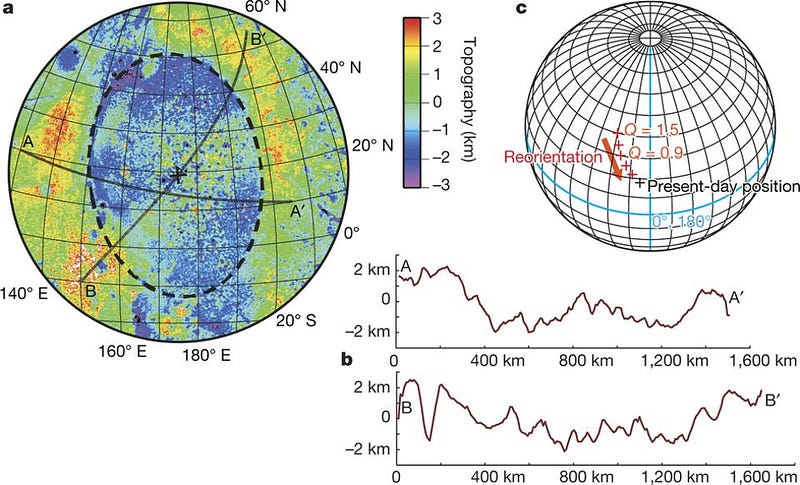
Pluto may not officially be an astronomical planet, but as a world, it has its own complex, interesting and active geology. A combination of four types of molecules — nitrogen, methane, water and carbon monoxide — can all exist in the solid, liquid and gaseous phases on Pluto, and give rise to an incredible variety of terrain. The tall, water-ice mountains; the cracked, washboard-like terrain; the cellular ice plains with flowing streams; the dark-colored highlands and more display huge variations in crustal thickness, age and altitude. An ultra-high-resolution flyover showcases some of the greatest variations.
https://players.brightcove.net/2097119709001/4kXWOFbfYx_default/index.html?videoId=4928809534001
Now that the map of Pluto is complete and the varied terrain has been studied, scientists have determined regions of instability and have identified how the Plutonian interior must be behaving in order to deliver the Pluto that we see. The surface features we see are transient on significantly shorter timescales than the mountains and continents are on Earth, and faulting and mountainous reorientation must be common. Sputnik Planitia, a large, teardrop-shaped depression, represents a massive unit of actively convecting volatile ices several kilometers thick. The gravitational stresses resulting from this instability can lead to planet-wide faulting in the crust, further indicating how active Pluto is.
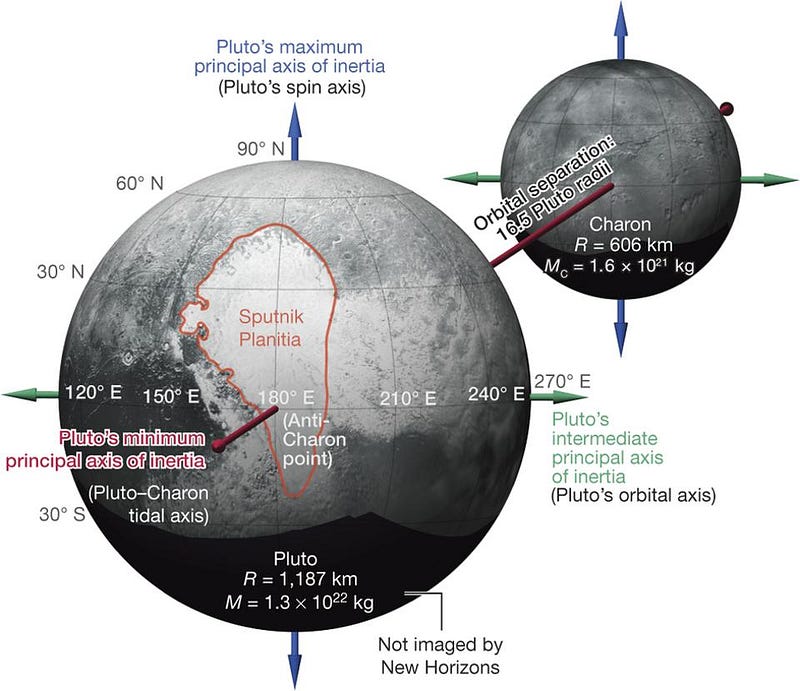
Despite having a less-dense ice surface that must be 3–4 kilometers thick, with a denser layer more similar to the rest of Pluto’s surface underneath it, this portion of Pluto exhibits a positive gravitational anomaly. Much like Earth’s oceans, where the crust is thinnest, can be explained by Earth’s sub-crustal mantle, Sputnik Planitia could be explained as a natural result if Pluto has a huge subsurface ocean. In particular, the New Horizons Geology, Geophysics & Imaging Theme Team indicates it:
would naturally result because of shell thinning and ocean uplift, followed by later modest nitrogen deposition
With a subsurface ocean, Pluto’s entire geology can be explained in one fell swoop.

Just as on Earth, we say “it’s only the tip of the iceberg” with the full knowledge that 90% of the mass of an iceberg is submerged beneath the surface, there should be a water-ice ocean beneath an icy crust, and that crust should be thinnest underneath the crater that Sputnik Planitia resides in. The left “lobe” of Pluto’s famous heart is the deepest depression in the Plutonian surface, and must have reoriented itself to align in a gravitationally favorable way with the Pluto-Charon axis. With this observation under our belts, we can now more accurately map the interior of Pluto than ever before.
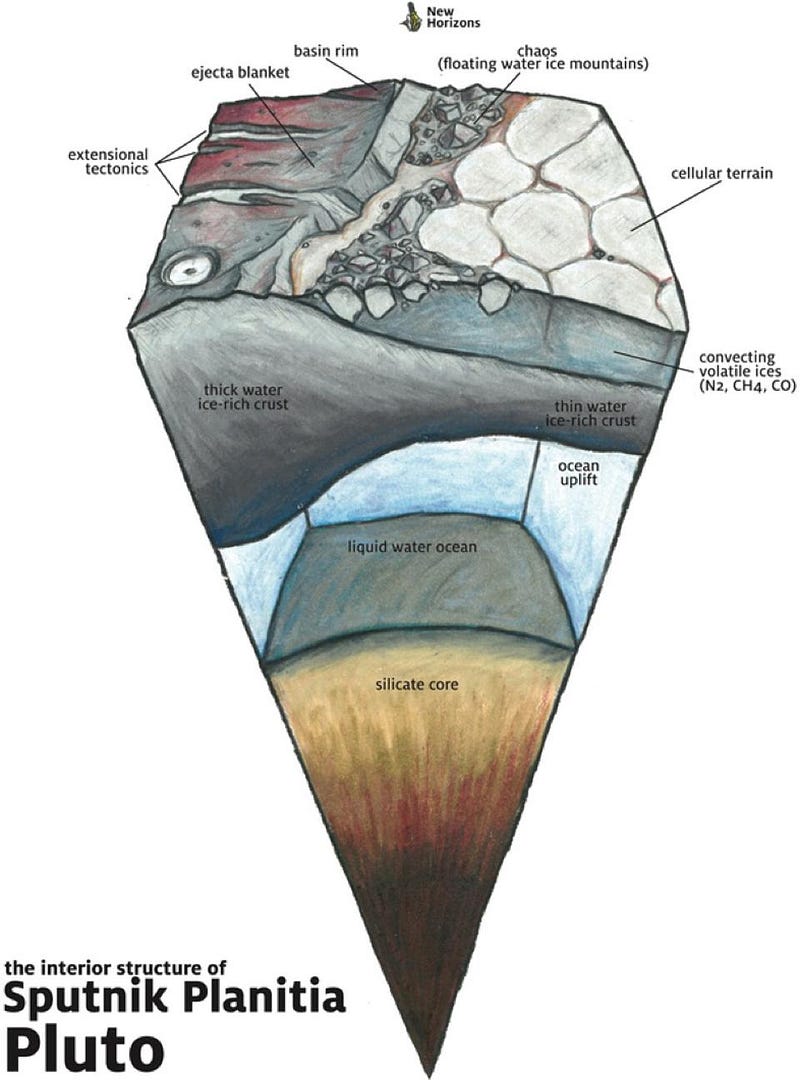
Most impressively, this research raises a tantalizing possibility: that as Sputnik Planitia continues to accumulate ices, Pluto may yet reorient itself again, as subsurface changes continue to ensue. This is possible because nitrogen becomes an atmospheric gas during the “day” side, but then when Pluto continues in its orbit and the nitrogen heads to the “night” side, it precipitates, and some of that lands in Pluto’s heart. According to researcher James Keane,
Each time Pluto goes around the sun, a bit of nitrogen accumulates in the heart. And once enough ice has piled up, maybe a hundred meters thick, it starts to overwhelm the planet’s shape, which dictates the planet’s orientation. And if you have an excess of mass in one spot on the planet, it wants to go to the equator. Eventually, over millions of years, it will drag the whole planet over.
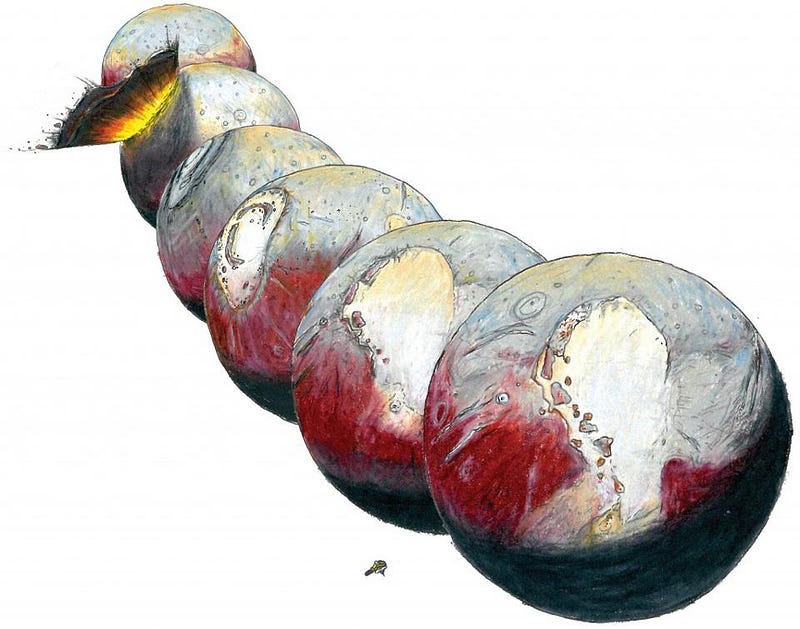
The biggest implications are for a massive subsurface ocean on Pluto, but this also indicates a world that continues to change, evolve, tip, crack and even reorient itself as time goes on. The most distant worlds in our Solar System are still active. Being frozen was never such a hot topic as it is today.
This article was based on the research in the Nature Letters “Reorientation of Sputnik Planitia implies a subsurface ocean on Pluto” by F. Nimmo et al., Nature (2016) and “Reorientation and faulting of Pluto due to volatile loading within Sputnik Planitia” by J. Keane et al., Nature (2016).
This post first appeared at Forbes, and is brought to you ad-free by our Patreon supporters. Comment on our forum, & buy our first book: Beyond The Galaxy!





